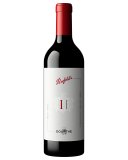CHATEAU LE TERTRE ROTEBOEUF Grand cru
Beginning with his first vintage at Tertre Roteboeuf in 1978, François Mitjavile didnt need long to grow his (staunchly!) unclassified estate into one of the most respected names in St Emilion. Part winemaker, part philosopher, Mitjavile is one of the great characters of Bordeaux. He could be considered almost Burgundian in his approach - the opulence and grandeur are for his wines, not his front gate, the cellars are not gilded halls and statues. Mitjavile generally picks late, uses 100% new oak, and produces no second wine. Truly one of the personalities of the region.
Chateau Mouton-Rothschild, 1ER CRU CLASSE Le Petit Mouton
The second wine of Chateau Mouton Rothschild was first released in 1993. Le Petit Mouton takes its name from a small house next to the main Chateau, the official residence of Baron Philippe Rothschilds wife and family. The Chateaus modern age began in 1922 producing vintages through what were, at the time, cutting-edge techniques; though seen as revolutionary at the time, many of these methods are still in use today. This includes the groundbreaking concept of bottling all wine on the estate, allowing for an unprecedented level of control over the Bordeaux sold from Mouton-Rothschild.
Chateau Figeac 1er grand cru classe
While a fair share of Bordeaux vineyards can claim significant historical pedigree, few would be able to touch Chateau Figeac - it is one of a select few St Emilion vineyards to have been continuously occupied for over 2,000 years! The estate dates back to the second century when even the ancient Romans who occupied the area were aware of its outstanding terroir. One figure dominates the Chateaus modern era, and that is Thierry Manoncourt who ran the property from 1947 until his death in 2010, just shy of his 93rd birthday. Under his leadership, the Chateau was the first major Right Bank estate to embrace modern techniques such as temperature controlled, stainless steel vats. The traditional-styled Bordeaux has, understandably, gone through a wide range of iterations in its 2,000-plus year history - yet it still manages to surprise and delight. The 2016 earned rave reviews from critics, with Jancis Robinson hailing it as a wine of which ...the Manoncourt family should be very proud.
Chateau Beausejour-Duffau-Lagarosse 1er grand cru classe (B)
Penfolds Dourthe CabMerlot Non-Vintage
The French component of this wine was made at two of the Dourthe-owned wineries. Australian components of this wine were made at Penfolds Nuriootpa Winery in South Australia. Both components were blended and bottled in South Australia for a truly one-of-a-kind release.
Chateau Haut-Bailly Grand cru classe
While the estate known as Chateau Haut-Bailly dates back to 1461, its wine production began in 1530, falling into the hands of the de Leuvarde and Le Bailly families in 1630. It was purchased in 1998 by Robert G Wilmers, a Harvard-educated banker, and his French wife Elisabeth and under their care, the estate has begun producing some of the best wines in its history. The cellars and production procedures were renovated and modernised and this year, the Chateau itself was awarded government recognition of its cultural and vinious heritage. From some of the oldest vines in the region, the 2016 has been lauded as one of the Chateaus best, with Neal Martin hailing it as perhaps the best that I have tasted in almost 20 years of tasting at this estate.
Chateau Valandraud 1er grand cru classe
Poderi Aldo Conterno Bussia Colonnello, Barolo
Chateau Pichon-Longueville Baron 2me cru classe
Chateau Pichon-Longueville Lalande 2me cru classe
The history of Chateau Pichon-Longueville Baron is a tale of two estates. The chateau and vineyard known as Pichon Baron was given in dowry to the founders daughter when she married Jacques du Pichon Longueville. After the death of their descendent, the Baron Joseph de Pichon Longueville, in 1850 the estate was again divided - on his deathbed, he gave what became Chateau Pichon Baron to the men of his family, and what became Chateau Pichon Lalande to the women - resulting in, some say, more masculine and sensuous styles of wine respectively! Between the 1960s and the 1980s, the estate went through a period of rather lacklustre production - however, since 1990, they have been producing, according to many, some of the best wines in their history. The 2016 has earned high praise and glowing comparisons to their legendary 1990 Pichon Baron.














